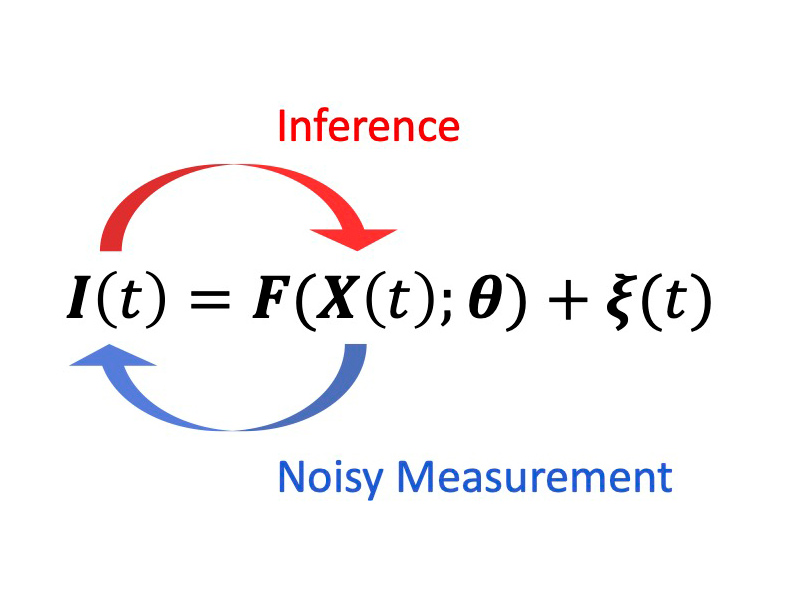Optimal inference of molecular interaction dynamics in FRET microscopy
Dr. Keita Kamino - April, 2023
Signal-to-noise ratio (SNR) ultimately limits how much we can learn from data. In fluorescence microscopy, SNR is set by the number of photons acquired from a sample and the efficiency with which these photon counts are used in data analysis. Researchers have primarily focused on improving the former by, for example, developing brighter fluorescent proteins; however, the latter has remained comparatively underexplored. In intensity-based time-lapse fluorescence resonance energy transfer (FRET) microscopy, a powerful and popular method for quantifying the dynamics of molecular interactions inside cells, data analysis is particularly complicated due to the presence of multiple confounding factors such as photobleaching. Based on filtering theory, a set of machine-learning algorithms to solve inverse problems associated with dynamic systems, our work develops an information-theoretically optimal method to estimate molecular interaction from such FRET data and achieves theoretically-maximal SNR. Like brighter fluorescent proteins and more sensitive photodetectors, the new method expands the scope of FRET microscopy without requiring any new hardware.
